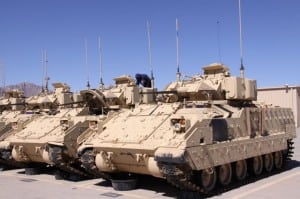
The Army wants lighter body armor and weapons as well as a future fighting vehicle to restore a greater degree of tactical ability in future combat, according to a top general. Director of Army Capabilities and Integration Center (ARCIC) and Deputy Commanding General, Future, U.S. Army Training and Doctrine Command (TRADOC) Lt. Gen. H.R. McMaster said Tuesday reducing the weight soldiers must carry will help provide “overmatch” capability. McMaster said the Army has prototyped an automatic weapon that weighs in…













